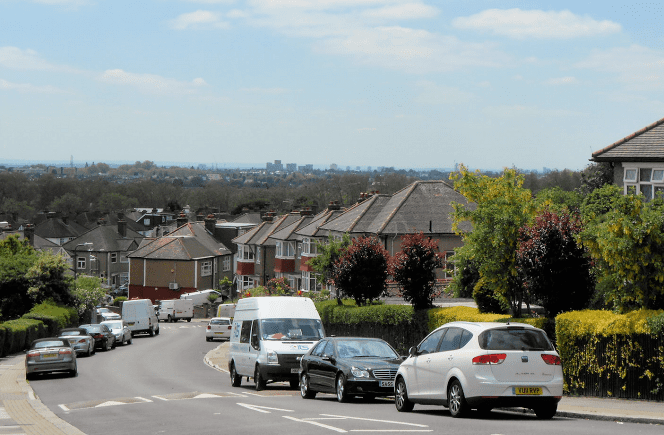OS grid reference TQ225865 Postcode district NW10, NW2 | Sovereign state United Kingdom Dialling code 020 | |
 | ||
Population 14,425 (2011 Census. Ward) | ||
The end of the world in wembley cricklewood neasden dollis hill
Dollis Hill is an area in northwest London, which consists of the streets surrounding the 35 hectares (86 acres) Gladstone Park. It is served by a London Underground station, Dollis Hill, on the Jubilee line, providing good links to central London. It is in the London Borough of Brent, close to Willesden Green.
Contents
- The end of the world in wembley cricklewood neasden dollis hill
- Map of Dollis Hill London UK
- 1980 05 26 e1 memory dollis hill london uk
- History
- Transport
- Famous residents
- References
Map of Dollis Hill, London, UK
The area is mainly residential (Edwardian terraced and 1920s/30s semi-detached houses) with a restaurant, greengrocer and convenience stores near the underground station.
Dollis Hill played a part in the Second World War as the code-breaking computer used at Bletchley Park was built at the Post Office Research Station in Dollis Hill and the rarely used alternative Cabinet War Room bunker for Winston Churchill's government was dug underground here.
1980 05 26 e1 memory dollis hill london uk
History
The Dollis Hill Estate was formed in the early 19th century, when the Finch family bought up a number of farms in the area to form a single estate. Dollis Hill House itself was built in the 1820s. It was later occupied by Lord Aberdeen who often had Prime Minister William Ewart Gladstone to stay as a guest.
In 1901, a new public park was created the 35 hectares (86 acres) Gladstone Park, named after the former Prime Minister. An underground station, Dollis Hill tube station, was opened on 1 October 1909 as part of the Metropolitan line, now on the Jubilee line. Between the park and the underground station, Edwardian terraced houses were built at this time on a grid with names starting with letters in alphabetical order (with some letters missing) from Aberdeen to Normanby. Medium-sized, semi-detached houses were built to the east of this area between 1927 and 1935.
In World War I the tank design team responsible for the new Anglo-American or Liberty tank, Mark VIII was located here.
The first railway in the area was the Dudding Hill Line, opened in 1875 by the Midland Railway to connect its Midland Main Line and Cricklewood goods yard in the east to other lines to the south-west. The Dudden Hill station on the line closed for passengers in 1902, but the line still carried freight.
The code-breaking Colossus computer, used at Bletchley Park during the Second World War, was built at the Post Office Research Station in Dollis Hill by a team led by Tommy Flowers. The station was relocated to Martlesham Heath at the end of the 1970s. The Post Office Research Station building has now been converted into 62 flats and is now known as 'Chartwell Court', with an access road called 'Flowers Close'.
The alternative Cabinet War Room bunker for Winston Churchill's World War II government code-named Paddock is located under a corner of the Post Office Research Station.
Transport
The area is served by a London Underground station, Dollis Hill, on the Jubilee line. There are regular services to Baker Street in 15 minutes and Westminster in 20 minutes. It is in Travelcard Zone 3, three stops from West Hampstead and within easy reach of Wembley Stadium.
London Buses routes 226, 302 and N98 serve the area. There are a large number of buses that service nearby Willesden Green.
Famous residents
William Ewart Gladstone, the UK Prime Minister, was a frequent visitor to Dollis Hill House in the late 19th century. The year after his death, 1899, Willesden Council acquired much of the Dollis Hill Estate for use as a public park, which was named Gladstone Park.
Eric Simms, the ornithologist, broadcaster and author, lived in Brook Road. His book, Birds of Town and Suburb (1975), was based on his studies of the birds in Dollis Hill.
Mark Twain stayed in Dollis Hill House in the summer of 1900. He wrote that "Dollis Hill comes nearer to being a paradise than any other home I ever occupied."
